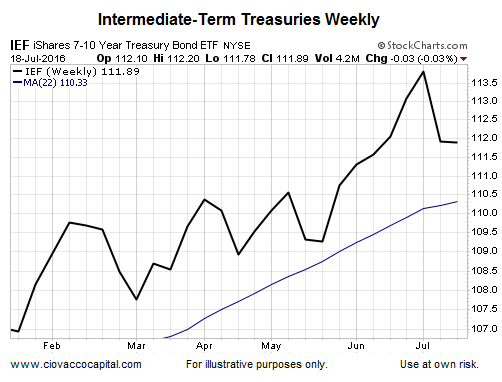Total Debt Is Much Worse Than 2007
Global debt levels have increased at a rapid rate since the financial crisis. Debt, of course, has to be taken in the context of an economy’s ability to generate value. From Mauldin/Dillian:
The US has a 103% debt-to-GDP ratio. It’ll go up a lot under either Trump or Clinton. Italy’s debt to GDP is about 170% or so; Japan is at 240%. There really isn’t any chance that Japan is going to pay you back, or Italy, or even the US, once you take out-of-control entitlements into account.
Default, Extend And Pretend, Or Inflate
Debt has been and continues to be a well-known problem, and yet, it just seems to keep growing and growing. The easiest way to reduce the economic drag from bloated debt is to grow your way out of the problem. For numerous reasons, that has proved to be a difficult task.
If growth does not pick up, there are three major ways to deal with debt: (1) default, (2) extend and pretend or (3) inflate. From Mauldin/Dillian:
Nobody is going to default here. You want to talk about Financial Armageddon… that would be it. Greece hasn’t had a lot of luck with extending and pretending. They’re in this sort of endless depression. I doubt anyone would want to copy them. Nope, everyone is going to inflate, which is the stealth way to default. There has already been open discussion about helicopter money in Japan (essentially the BOJ retiring or canceling outstanding debt).
Central Bankers And The Law Of Diminishing Returns
This week’s stock-market video looks at how we got to this point and what are the possible next moves from global central bankers. The video takes a detailed look at the economic limitations of zero rates, QE, and helicopter money.
What Is The Market’s Current Read?
When the Fed was talking about entering a traditional interest-rate hiking campaign, the markets were having difficulty coming to grips with a rising inflation scenario. However, once the Fed flipped the interest rate playing field in the first half of 2016, inflation-protection assets started to catch a bid. Notice gold started to turn just as the Fed backed off its “four rate hikes in 2016” stance (late January-early February 2016).

Does The Market Feel Inflation Is Imminent?
Given the look of the charts for long-term Treasuries (NYSE:TLT) and intermediate-term Treasuries (NYSE:IEF) below, the markets do not appear to be overly concerned about inflation in the short run.

However, like anything in the markets, that tame read on inflation is subject to change in the coming months; something we will continue to monitor closely.

Stocks, Bonds And Gold All Holding Up Well
The mathematical readings from our market model for stocks, bonds and precious metals all reflect bullish trends. The demand for all three asset classes aligns with an expectation that central banks will continue/expand their ultra-dovish policies (good for stocks and bonds), along with a growing acceptance that inflation/currency debasement may be the preferred long-term approach to deal with overwhelming global debt levels (good for gold and silver).

The Fed Who Cried Wolf
Just weeks after Janet Yellen outlined a new normal marked by low rates, the chatter has started about hiking again as early as September. Are investors buying it? Not really, the market, as of 10:30 am ET Tuesday, is pricing in an 81% probability the Fed does nothing at its September meeting.
